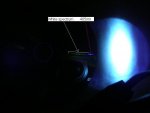Hi,
I just wonder if there is any concerns regarding violet lasers. I think about skin exposure, and the posibility to develope skin cancer. We know that the radiation of violet and UV light from the sun can result in skin cancer. A 200 - 400mW violet laser radiates maybe 100 times that energy locally on you skin with a somehow focused 405nm laser. So what is the posibilities to develope skin cancer? It should be quite high if you're not careful!!
Any thaughts about this?
Br.
Vidar
I just wonder if there is any concerns regarding violet lasers. I think about skin exposure, and the posibility to develope skin cancer. We know that the radiation of violet and UV light from the sun can result in skin cancer. A 200 - 400mW violet laser radiates maybe 100 times that energy locally on you skin with a somehow focused 405nm laser. So what is the posibilities to develope skin cancer? It should be quite high if you're not careful!!
Any thaughts about this?
Br.
Vidar





